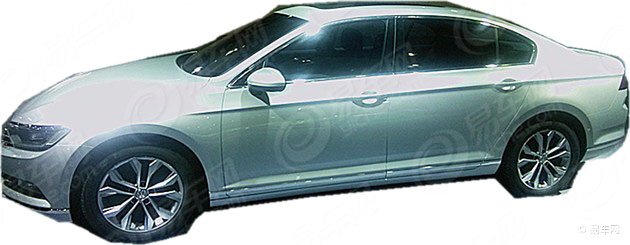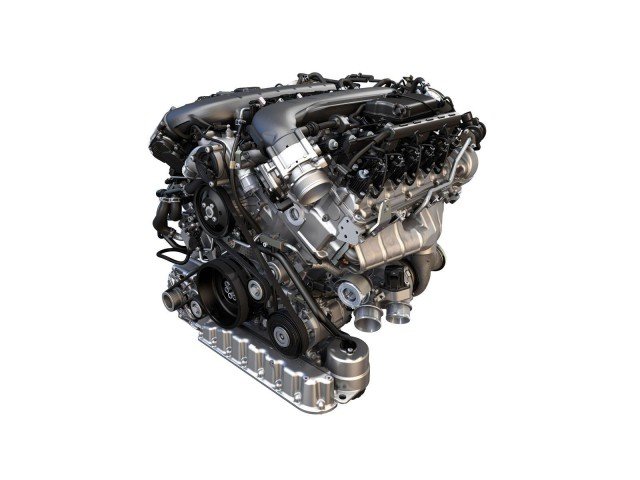Volkswagen at the 35th Vienna Motor Symposium: consistent continuation of the downsizing strategy
- New 3-cylinder TSI and TDI engines
- Innovative natural gas and electric drives
- Dr Heinz-Jakob Neußer: “Our objective is to combine efficiency and driving pleasure”
“Performance and efficiency”– with this focus Dr Heinz Jakob-Neußer, Member of the Board of Management at Volkswagen responsible for the Development Division, today presented future drive system trends from Volkswagen at this year’s Vienna Motor Symposium. One of the major challenges facing the global vehicle manufacturer is the continuous reduction of CO2 emissions – in compliance with very different statutory requirements worldwide. Despite the focus on efficiency, Dr Neußer – who is also responsible for engine development in the Volkswagen Group – says that no compromises will be made on driving pleasure.
Dr Neußer explained that, for example, state-of-the-art turbocharger technologies such as the “electric booster” to improve dynamic torque build-up, can effectively support future downsizing strategies. As well as giving first insights into the new high-performance and high-torque engines from Volkswagen such as the new 2.0 litre TDI bi-turbo with an impressive 176 kW for the new Passat or the 2.0 litre TSI with up to 294 kW for the sportiest Golf models, Neußer also presented the latest top developments in the field of DSG transmissions: the new 10-speed DSG for torque of 500 Newton metres and more.
But there are also new developments in the field of natural gas as a fuel. Natural-gas-powered vehicles are experiencing strong growth worldwide at an annual rate of more than 24 percent. With a “natural gas drive module” the modular basic concept of the Volkswagen EA211 petrol engine family supports this development and offers excellent economic and ecological prerequisites for all kinds of different applications – with and without charging – as a 3- or 4-cylinder TSI.
Electrification is a further building block for meeting the ambitious CO2 targets. The direction taken with the XL1*, e-up!** and e-Golf*** is being consistently pursued with the latest plug-in hybrid in the Golf GTE****.
This means that with the Golf Volkswagen is the first manufacturer worldwide to offer all currently relevant drive technologies in one model series – TSI, TDI, TGI, electric and plug-in hybrid drives. What’s more, preparations have already been made for integrating fuel cells. The challenges relating to hydrogen first and foremost concern availability and storage.
Furthermore, in the Austrian capital in expert presentations the next generation of downsized combustion engines from Volkswagen for the entry-level segment was presented: the new 3-cylinder TDI and the new 1.0 litre 3-cylinder TSI demonstrate the steady advances in terms of fuel consumption, emissions and driving pleasure.
New 1.0 litre 3-cylinder TSI®
The new 3-cylinder TSI® engine represents a consistent continuation of the Volkswagen downsizing strategy. The next evolution stage for the EA211 engine family will be implemented step by step in A0 (Polo) and A class vehicles (Golf). The charge exchange and injection components of the 3-cylinder TSI® that have been further developed as against the 4-cylinder engine form the basis for more efficient combustion with faster conversion of energy.
Like the familiar highly-efficient and dynamic 4-cylinder engines, the 3-cylinder TSI® combines low exhaust gas emissions with low fuel consumption without compromising on driving pleasure.
The 1.0 litre TSI®, which is initially being fitted in the Polo and the Golf in three power ratings, expands the existing modular system consisting of 3-cylinder MPI and 4-cylinder TSI® engines. With turbocharging and direct injection the 3-cylinder engine has power output of 85 kW in the Golf and 70***** and 81 kW respectively in the Polo. The maximum torque is 160 Nm for the 70 kW variant and 200 Nm for the engines with higher power ratings. This enables the 1.0 litre TSI® to achieve dynamic performance coupled with very low fuel consumption.
In future there will also be a CNG variant based on the new 1.0 litre TSI 3-cylinder engine, thus continuing the expansion of the natural gas model portfolio in the supermini car segment.
New 1.4 litre 3-cylinder TDI
As part of the engine strategy of the Volkswagen brand the modular diesel component system (MDB) is being expanded to include a new 1.4 litre 3-cylinder engine. The development focused on achieving a clear reduction in weight and fuel consumption as against the predecessor engine as well as improved performance.
The compact construction enables it to be fitted in the Volkswagen Group’s A0 and A segment vehicles. The new 3-cylinder TDI will initially be available in three power ratings (55******, 66******* and 77 kW) with a torque range of 210 to 250 Nm.
The example of the 55 kW engine clearly shows the progress made: whilst 177 Nm acted on the crankshaft of the predecessor engine that also had an output of 55 kW, the new engine has 210 Nm – an impressive increase of 20 per cent.
The new TDI engines, which all comply with emissions standard EU6, are replacing all previous diesel engines (1.2 litre 3-cylinder TDI and 1.6 litre 4-cylinder TDI) in the Polo.
A focus of the development activities for both the TSI and TDI engines was on reducing fuel consumption and CO2 emissions. In conjunction with measures relating to the transmission and BlueMotion Technology, a reduction in fuel consumption of up to 21 percent has been achieved compared with the predecessors, which were already fuel-efficient. Despite the additional technology modules needed to comply with the demanding emission regulations, an uncompromising lightweight design and the switch to an aluminium cylinder crankcase enabled a weight reduction of approximately eleven kilograms compared with the previous 3-cylinder engine. The weight reduction as against the discontinued 4-cylinder engine is even around 30 kilograms.
* XL1 fuel consumption in l/100 km: 0.9 (combined), electric power consumption in kWh/100 km: 7.2 (combined), CO2 emissions in g/km: 21 (combined), efficiency class: A+
** Electric power consumption e-up! in kWh/100 km: 11.7 (combined), CO2 emissions in g/km: 0 (combined), efficiency class: A+
*** Electric power consumption e-Golf in kWh/100 km: 12.7 (combined), CO2 emissions in g/km: 0 (combined), efficiency class: A+
**** Golf GTE – the vehicle is not yet on sale. It does not yet have full type approval and is therefore not subject to directive 1999/94/EC. Provisional figures: fuel consumption (combined) in l/100 km: 1.5; CO2 emissions (combined) in g/km: 35.
***** Polo 1.0 TSI BlueMotion – the vehicle is not yet on sale. It does not yet have full type approval and is therefore not subject to directive 1999/94/EC. Provisional figures: fuel consumption (combined) in l/100 km: 4.1; CO2 emissions (combined) in g/km: 94.
****** Polo 1.4 TDI 55 kW – fuel consumption in l/100 km urban cycle 4.0 / extra-urban cycle 3.1 / combined cycle 3.4, CO2 emissions (combined) in g/km: 88; efficiency class: A+
******* Polo 1.4 TDI 66 kW – fuel consumption in l/100 km urban cycle 4.0 / extra-urban cycle 3.1 / combined cycle 3.4; CO2 emissions (combined) in g/km: 88; efficiency class: A+





![Laugh [lol] [lol]](https://www.theautomotiveindia.com/forums/images/smilies/Laugh.gif) !
!